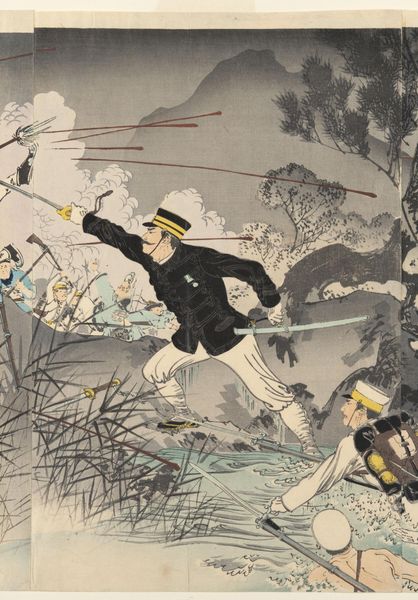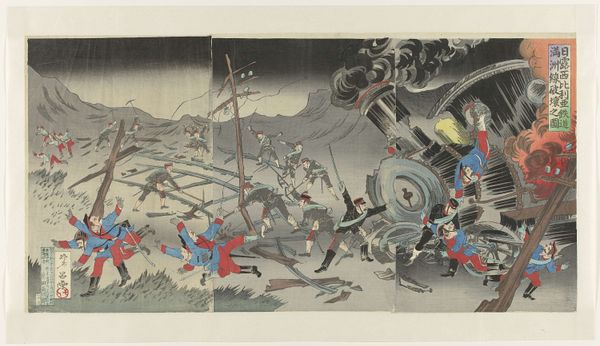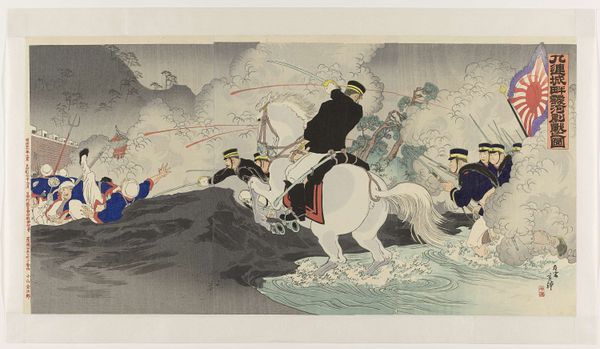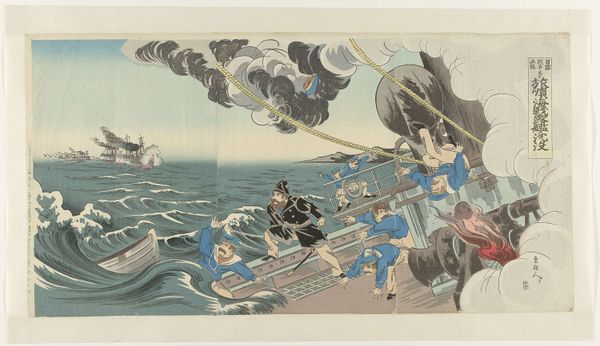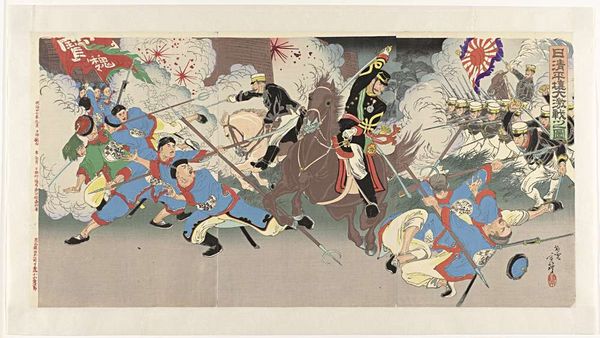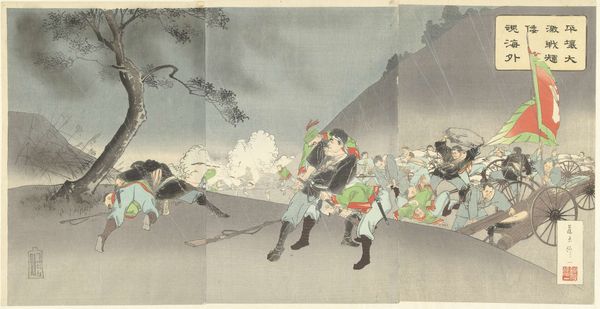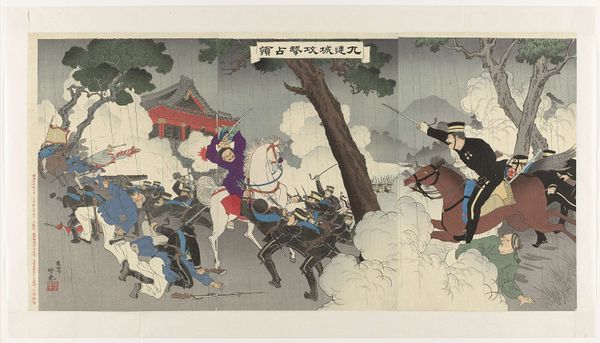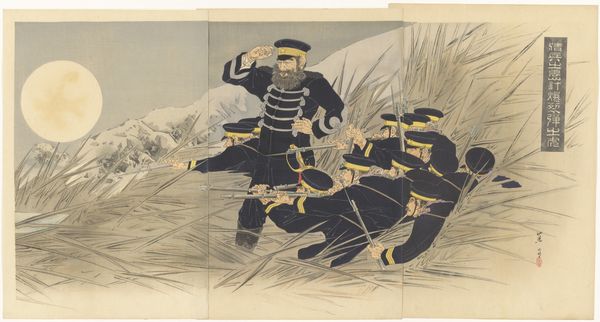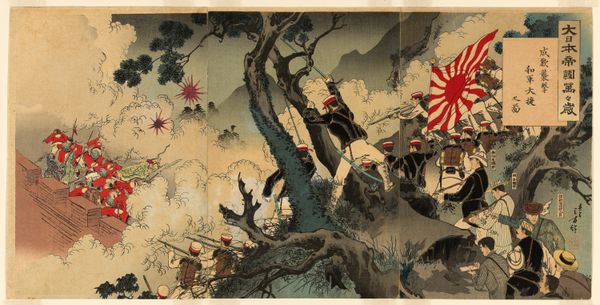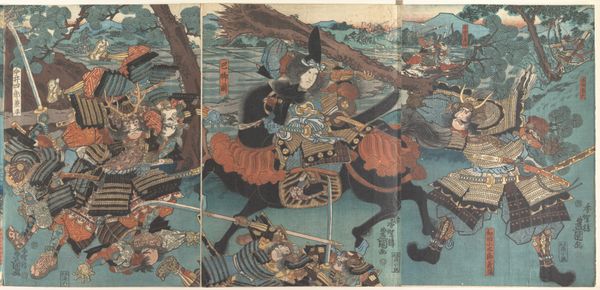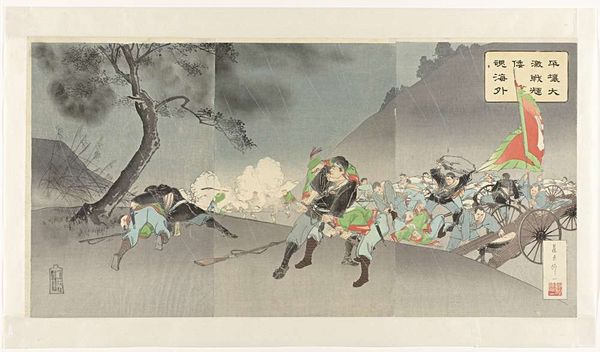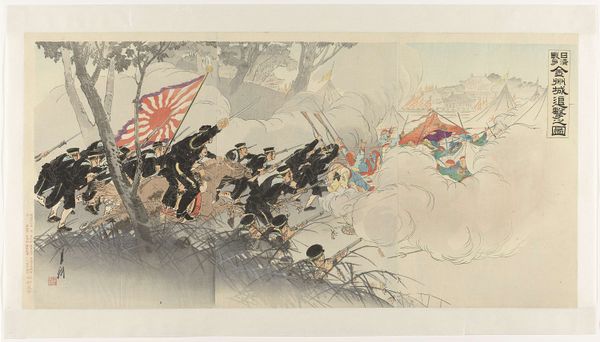
Triptych: Captain Matsuzaki Crossing AnjÅ Reveals His Great Bravery (AnjÅ o watari Daigekisen Matsuzaki Taii yÅ«mÅ) Possibly 1894
0:00
0:00
Dimensions: overall for matted triptych: H. 37.3 x W. 72.2 cm (14 11/16 x 28 7/16 in.)
Copyright: CC0 1.0
Curator: I see a clash—chaos rendered with such deliberate lines, it's fascinating. Editor: Indeed. This triptych, "Captain Matsuzaki Crossing Anjō Reveals His Great Bravery," by Mizuno Toshikata, depicts a scene from the Sino-Japanese War. Notice how the artist uses the triptych format itself—three separate panels joined together—to amplify the visual narrative of conflict. Curator: I'm drawn to the materiality of this work; it's a woodblock print, allowing for mass production and dissemination of this image. This in itself played a key role in shaping public perception of the war. Editor: Absolutely. It served as propaganda, glorifying Japanese military prowess and bolstering nationalistic sentiments at a time of intense societal upheaval. The print's emphasis on the captain's bravery normalizes the violence perpetrated within larger geopolitical struggles. Curator: But look at the textures, the varying line weights that bring depth to the reeds and the soldiers' uniforms. This was meticulously crafted labor, feeding into a larger system of production, consumption, and even political manipulation. Editor: Right, and by understanding the socio-political context, we can critically assess the messages embedded in this artwork and the power dynamics they reflect. Curator: It's a potent reminder of how artistic skill can be harnessed to both represent and reinforce ideologies. Editor: A dialogue between the battlefield and the printing press.
Comments
No comments
Be the first to comment and join the conversation on the ultimate creative platform.

